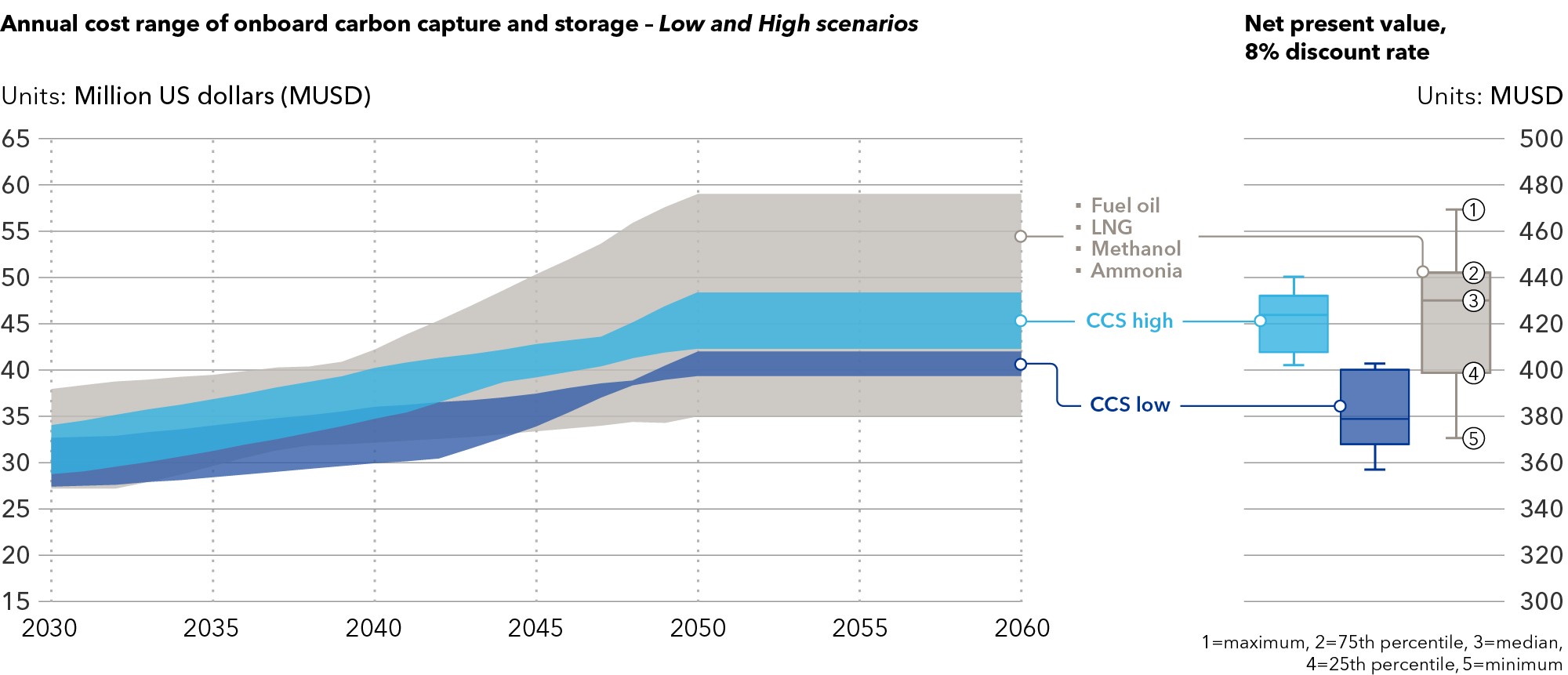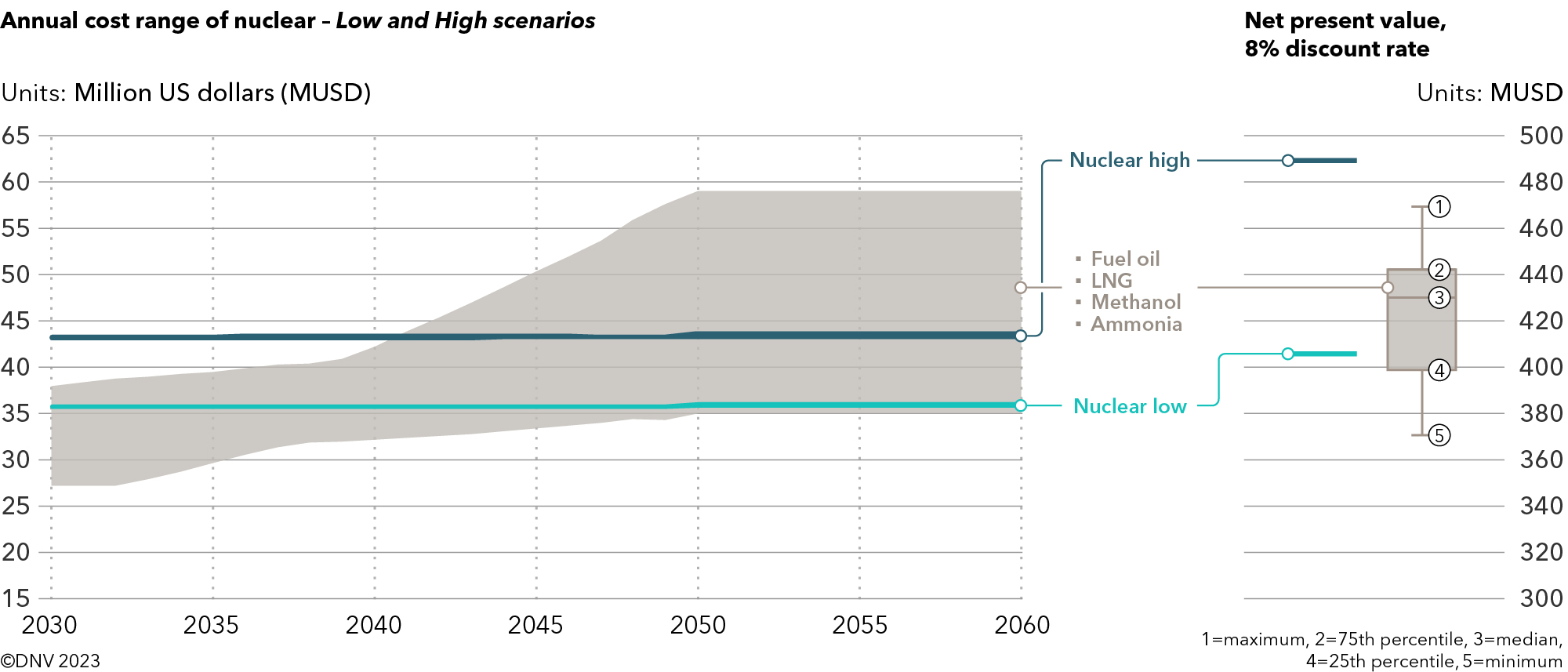With fuel availability limited, the maritime industry needs to explore all available options to reach its decarbonization goals.
This year’s Maritime Forecast to 2050 presents an economic analysis of onboard carbon capture and storage (CCS) and nuclear propulsion through detailed case studies. Increased use of both technologies could contribute to GHG reductions while also reducing competition for carbon-neutral fuels.
For both technologies, the Maritime Forecast to 2050 performs a feasibility study using the FuelPath model of a 15,000 TEU container vessel as a case, benchmarking against fuel oil, LNG, methanol and ammonia.
Onboard carbon capture and storage (CCS)
The concept of onboard CCS is based on technology that captures the carbon in the fuel before CO2 is emitted to the atmosphere through the exhaust. This requires onboard CO2 storage capacity as well as a value chain that can receive and store the CO2 permanently away from the atmosphere.
The case study finds that onboard CCS can be operationally feasible for a large container vessel using 4,000 cubic metres (m3) of CO2 storage on board, offloading CO2 twice per trip Asia-Europe, and annually capturing 70% of the carbon dioxide.
If the increase in energy use to capture the CO2 can be kept below 15%, and if the cost for offloading, transporting, and sequestering the CO2 is below 40 USD/tonne, onboard CCS can be a competitive option for decarbonization.

Nuclear propulsion
Nuclear propulsion is a zero-emission, zero-carbon and carbon-neutral alternative for shipping, and industry actors are considering nuclear-powered merchant shipping. Nuclear propulsion provides the ship’s main energy needs from an onboard nuclear reactor in which controlled fission of nuclear fuel produces heat that is extracted using a coolant.
However, significant implementation barriers still stand in the way, including international regulation, public perception and technology costs.
There are 160, mostly naval, nuclear-powered vessels today, and the Maritime Forecast to 2050 finds that it is a technically feasible solution for the case study ship, with a reactor and gensets for redundancy and take-me-home functionality.
The report finds that nuclear propulsion can be a competitive option if reactor costs are in the lower range of historical costs for land-based nuclear power plants.
